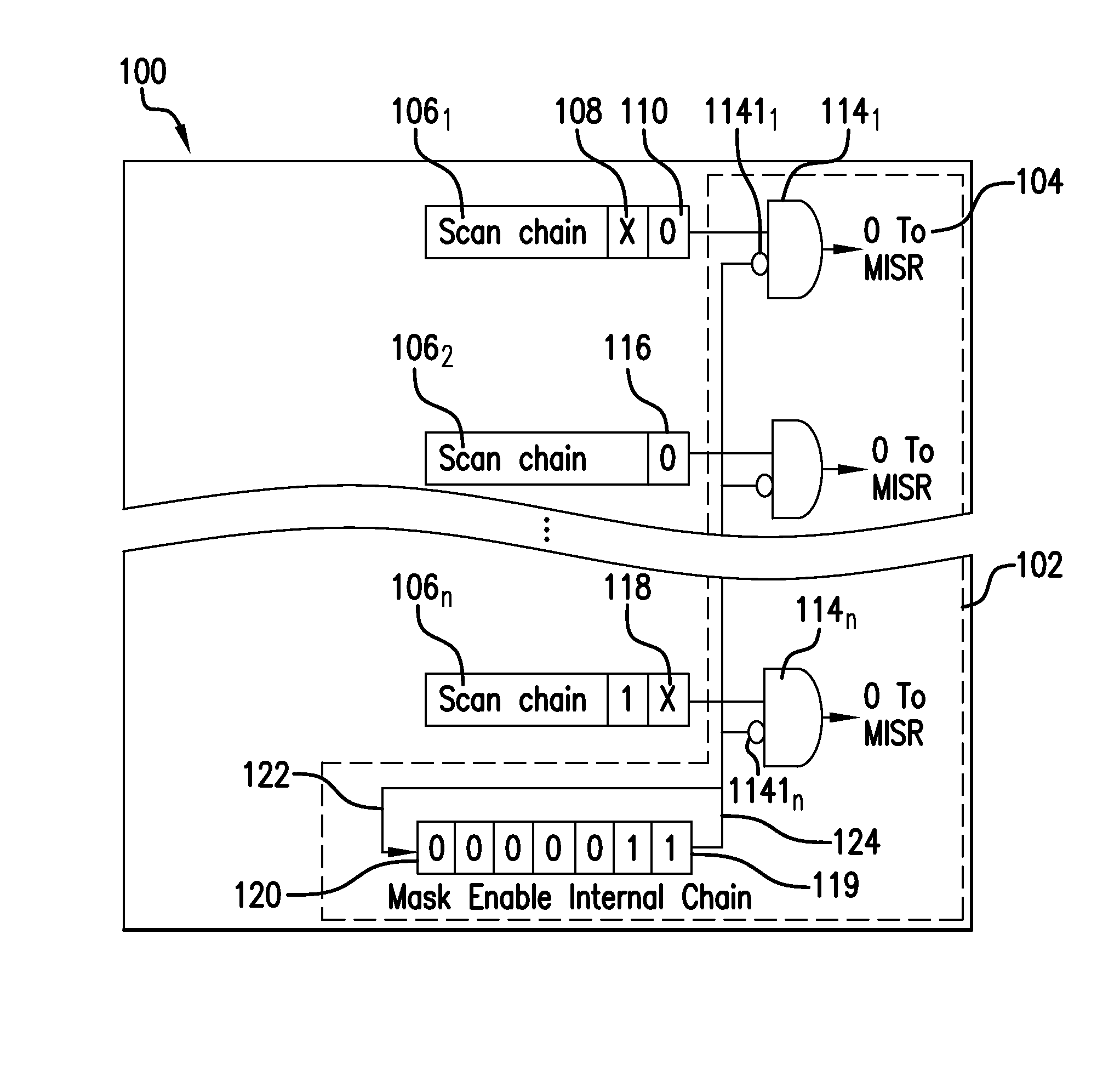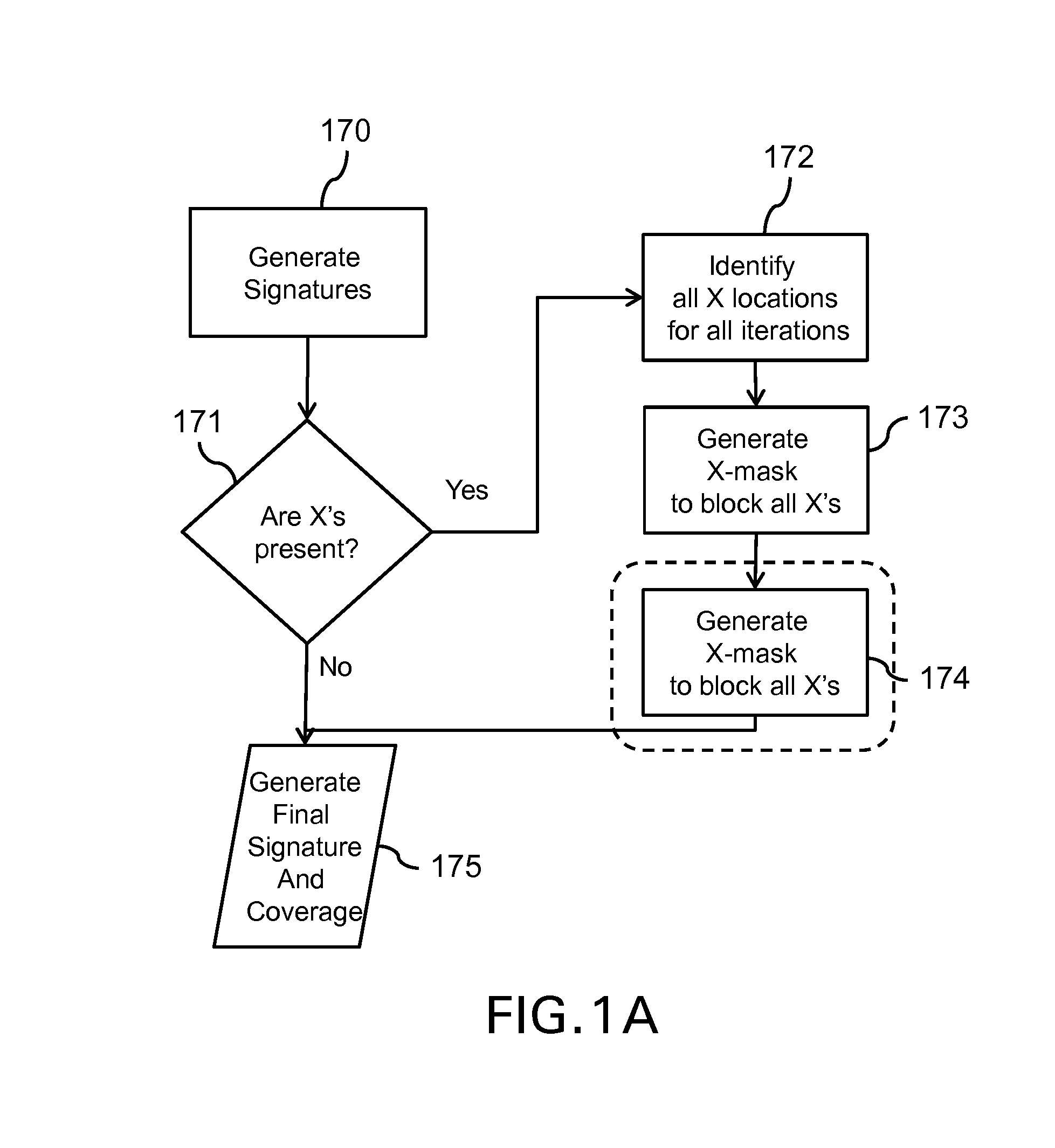System and method for bit-wise selective masking of scan vectors for X-value tolerant built-in self test
a built-in self test and scan vector technology, applied in the direction of electronic circuit testing, measurement devices, instruments, etc., can solve the problems of inability to suitably address on-going ic validation, inability to continuously validate the ic used as a brake controller in an automobile, and inability to provide suitable measures in the past. to achieve the effect of maximizing ic coverage and reliability
- Summary
- Abstract
- Description
- Claims
- Application Information
AI Technical Summary
Benefits of technology
Problems solved by technology
Method used
Image
Examples
Embodiment Construction
[0022]The subject system and method provide for selective bit-wise masking of operational scan results generated from a built-in self-test (BIST) incorporated into an integrated circuit (IC). The subject system and method provide for a BIST which is tolerant of X-values (which may be unknown, indeterminate, out of bound, or other unexpected values—as opposed to standard expected values such as “0” and “1”). Such X-values may appear in the operational scan results of the IC. X-values may be the result of un-modeled logic, tri-stated or floating busses, timing violations, un-driven nets, non-initialized flip-flops or latches, and the like. A composite mask pattern is selectively generated according to identified locations of these X-values in scanned flip flops, registers, or memory elements of the IC during a simulation of that IC. The composite mask pattern is cyclically maintained through repeated bit-wise shifts with recycling of bits from a least significant bit position to a mos...
PUM
 Login to View More
Login to View More Abstract
Description
Claims
Application Information
 Login to View More
Login to View More - R&D
- Intellectual Property
- Life Sciences
- Materials
- Tech Scout
- Unparalleled Data Quality
- Higher Quality Content
- 60% Fewer Hallucinations
Browse by: Latest US Patents, China's latest patents, Technical Efficacy Thesaurus, Application Domain, Technology Topic, Popular Technical Reports.
© 2025 PatSnap. All rights reserved.Legal|Privacy policy|Modern Slavery Act Transparency Statement|Sitemap|About US| Contact US: help@patsnap.com



